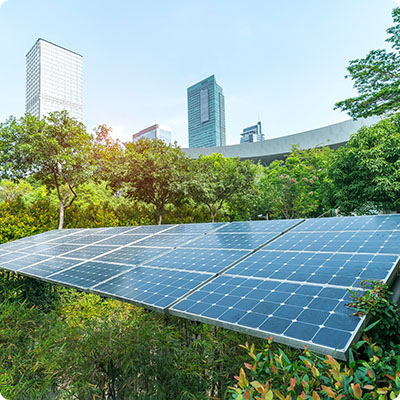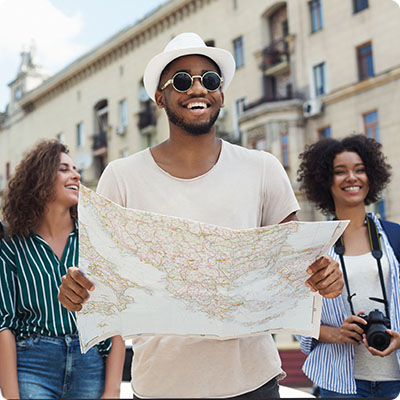Russian icons
and the Tretyakov Gallery offer a vast panorama of religious images from the 12th to the 15th centuries, including the schools of Pskov and Novgorod. It was not until Peter the Great that new themes emerged. The Tsar detached St. Petersburg from Moscow influences by making it his capital. Moscow remained the centre of religious art, while Saint Petersburg saw the emergence of a new school of painting. To this end, Peter I invited foreign painters to train Russian artists. Familiar with German, French and Italian painting, the painters moved in new directions. The portrait, in the first place, although the European influence remains palpable. Ivan Nikitin painted several portraits of the sovereign, including the striking Peter the Great on his deathbed (1725).Affirmation of an identity
Emancipation continued in the 19th century. Formats grew and genres multiplied: seascapes and historical frescoes as striking as Alexander Ivanov's The Appearance of Christ to the People
or Karl Brioulov's The Last Day of Pompeii. These painters are considered to mark the birth of Russian art. Subsequently, Russian painting explored the realist vein with Vasily Perov, who tackled social themes such as alcoholism. The realist breath gradually leads to a demanding social painting, symbolized by the Ambulants. Sensitive to the peasant cause, this group criss-crossed Russia in 1863 to awaken the rural world to art. Among its members, Ilya Répine (1844-1930) notoriously painted The Singers of the Volga and The Zaporogues Cossacks writing to the Turkish sultan. At the end of the 19th century, 300 mosaics made by the most talented artists of the time (including Nikolai Kharlamov) adorned the Cathedral of St. Saviour on the Sang-Versé. They depict biblical scenes and figures between ornamental compositions.Radiation of the vanguard
Between 1885 and 1925, a nebula of Russian artistic movements came into being. Grouped together under the term avant-garde, these currents upset the international scene. A circle of innovative artists gathered around the patron Savva Mamontov. The result is the Symbolist movement, which makes a radical break with realism. Mikhail Vroubel (1856-1910) resolutely departed from the social tradition and produced a fantastic work that made him the precursor of art for art's sake. The Musée de l'Avant-garde retraces the history of this creative ferment through a collection of paintings, drawings, photographs and various unique documents.
The innovative breath continues with Kandinsky (1866-1944) who rejects all figurative representation. Composition VII marks the birth of abstraction in 1913. Another great revolutionary figure, Malevitch and his White Square on a White Background reorient art towards Suprematism. As for the sculptor Archipenko, he questioned the relationship between forms and space. Although living abroad, Marc Chagall wields a poetic vocabulary deeply attached to his native land. Associated with cubism and then constructivism, Alexandra Exter made a career between France and Russia and painted watercolour miniatures at the end of her life. In Saint Petersburg, modern art is discovered at the New Tretiakov Gallery in Krymsky Val.Towards Perestroika
The revolution of 1917 divided art into two trends: exile and socialist realism. The socialist canons impose to represent the life of the workers in a favourable light in the name of propaganda. As artists who did not respect the canons were banned from exhibiting, they organized apartment exhibitions.
Alexandre Rodtchenko (1891-1956) became interested in photography in 1924 after exploring painting, collage and photomontage. Nourished by his constructivist work, he sought new angles of view in photography in collaboration with his wife Varvara Stepanova.
Artists close to New Academism, the main post-Perestroika movement, formed the Saint Petersburg School of Photography around Timur Novikov. The latter, a visual artist, musician and art theorist, is considered a major figure of non-conformism. In Russia, photography has a particular link with politics. Lenin was the first in a line of leaders who encouraged the development of this discipline and used it as a tool for internal and external propaganda. The second Russian specificity is that all social classes adopted photography very early on to document their country. Associations were founded as early as 1925 to encourage photographic art, which was seen as a means of disseminating messages accessible to the greatest number of people. St. Petersburg is now considered the cradle of Russian photography. The Museum of Photography presents the history of this discipline from the first daguerreotypes to the present day, while Rosfoto hosts temporary exhibitions of Russian and international photographers.Places of contemporary expression
In spite of its sumptuous past, St. Petersburg offers many exhibition venues dedicated to the art of our time. The Erarta Museum of Contemporary Art has a collection of 3,000 Russian works, paintings, sculptures and video art from the post-war period to the present day. The Manege art gallery, housed in a former riding school, puts its 4,500 square metres at the service of contemporary art.Since 2012, the Street Art Museum has been bringing together frescoes, collages and sculptures. In the same spirit, the annual Shine festival has been honouring street art since 2015. As the centre of Saint Petersburg is listed as a UNESCO World Heritage Site, street art is seriously prohibited. But you only have to walk away from the centre to spot works left by local and foreign artists. For your information: New York graffiti artist Futura, with the city's approval, decorated a skate park in Vvedenskaya Street. At 29 Italianskaya Street, the Colosseum stands on a blue palisade painted by the "Energy of the Nation" group. The alternative space Third Cluster offers bars and showrooms, but also murals. The Sevkabel Port space, a mecca for creation and chill out, hosts street art festivals in its two hangars.
Route along the Volga River
For centuries, Russian artists have drawn their inspiration from the Volga River. This route is designed to discover the many facets of local artistic history.In Ouglitch
, history brings us to the church of Saint-Dimitri-sur-le-Sang-Versé.It was built on the site of the assassination of Prince Dimitri, which marked the beginning of the Times of Turmoil. Inside, the paintings depict the crime of the tsarevich and the popular uprising. Ivan, the second son of Ivan the Terrible, died in mysterious circumstances. It is said that his father incidentally hit him with a stick. This scene inspired the painter Ilya Repin to create his most famous painting, which can be seen at the Tetriakov Gallery.
The Cathedral of the Transfiguration of the Saviour, with its green bulbs, contains ornamentation imbued with the Italian Renaissance and an exceptional collection of 17th-century icons.Follow the course of the Volga River
to Yaroslav, which is prized for its wall decorations.In 1658, a fire in the city miraculously spared the interior of the Church of the Prophet Elijah. Afterwards, it was decorated with frescoes by two Kostroma artists: Nikitin and Savin. Around the splendid iconostasis, their works illustrate the life of the prophet among scenes of rural life.
The Art Museum displays icons of the Yaroslav school, including the famous 13th century Christ Pandokrátor . There is also a gallery of old portraits of local petty bourgeois and a Russian avant-garde room.Two public sculptures to see: the war memorial showing the soldier allied to the worker. More modern, the black sculpture of the Trinity created by Mukhin in 1995 on the occasion of the millennium of the evangelization of Russia. It emanates from the three pure silhouettes a shocking depth.
Kostroma is famous for its churches. The Monastery of the Epiphany of Anastasia houses the icon of the Mother of God Fedorov, venerated by the entire Orthodox community. Dating from the 10th century, it is said to have performed miracles and was painted by the evangelist Luke. The Church of the Resurrection of the Debra seems unreal with its carved facades and colourful frescoes. The inserts that adorn its doors with the effigy of a unicorn, a mermaid and a two-headed eagle are associated with the feast of the Resurrection.
Further east
, the city of Kazan offers evidence of the ancient Muslim presence in Tatarstan. The Qolsharif Mosque is also a cultural centre that houses the Volga Museum of Islamic Culture. The National Art Gallery in Kazan has been dedicated to local artists since the 19th century. The variety of genres represented makes it possible to discover both the landscapes of the province and the major events in Kazan's history.In the Cathedral of the Annunciation, built in 1552 by order of Ivan the Terrible, the frescoes tell the story of the famous icon of Our Lady of Kazan.
The Museum of Fine Arts of the Republic of Tatarstan is now the largest museum in the Volga Region with its 20,000 pieces. Paintings, sculptures, graphic works and icons from the 14th to the 19th century, from East and West, as well as local art from the 19th to contemporary times.
Direction Samara
and its Fine Arts Museum, which offers a collection of Soviet works from the 1920s to the 1970s in addition to a unique collection of Russian painters from the 18th and 19th centuries and avant-garde canvases.You have to climb the highest hill in Volgograd
to encounter one of the Seven Wonders of Russia: the Mamayev Kurgan Memorial and its 8,000-ton statue that embodies the call to arms of "Mother Russia". The only art museum in Volgograd, the Museum of Fine Arts was built from selected works from the Hermitage and the Tretiakov Gallery. It has been enriched by legacies and a collection of contemporary art open to local artists.Pavel Dogadin's painting galleryin Astrakhan offers a panorama of Russian icons from the 16th to the 20th century. It also exhibits works by the masters Kandinsky and Malevich.








